Understanding the Five Stages of Tooth Decay
June 5th, 2021

Did you know there are five distinct stages of tooth decay? And, that in the first stage of decay, you can actually take steps to reverse the progression of the disease? Indeed, it’s true. In the first stage of decay, whether you’re a child or an adult, the application of fluoride via fluoride treatments, your toothpaste and even the local water supply can stop a cavity from penetrating through the enamel and reaching its second stage. Even the saliva in your mouth and the foods you eat help to re-mineralize a tooth in jeopardy. But that’s just the first stage! What about the rest? Understanding how a cavity progresses can assist you in preventing each successive stage from occurring in your children. There’s always a lot going on in that little mouth!
Stage One: White Spots
In stage one, the tooth begins to show signs of strain from the attack of sugars and acids, and white spots will begin to materialize just below the surface of the enamel. These white spots are representative of the demineralization of the tooth and can be easy to miss because they’re likely to occur on your child’s molars. A dental exam, of course, is designed to catch such cavities! Can you see why regular visits to the dentist are recommended? As mentioned previously, at this stage, the cavity can be repaired without the need to excavate the tooth.
Stage Two: Enamel Decay
Stage two marks the beginning of the end for the surface enamel that is being attacked. Initially, the tooth erodes from the underside outward, so the outer enamel will still be intact for the first half of this second stage. Once the cavity breaks through the surface of the enamel, there is no turning back, and your child will need to have the cavity corrected with a filling.
Stage Three: Dentin Decay
If a cavity in your child’s mouth were to progress beyond stage two without you knowing, you’d become aware of it when it started to hit stage three because it would probably start to cause some pain. At this level, the cavity begins to eat away at the second level of tooth material that lies beneath the enamel: the dentin. A filling can still be used to stop the onslaught of bacteria assaulting the tooth in order to prevent the cavity from reaching the tooth’s most critical component: the pulp.
Stage Four: Involvement of The Pulp
Once the cavity reaches the pulp, it’s going to hurt. A lot. So if you’ve unfortunately missed all the signs to this point, a screaming child or moaning teenager will certainly let you know there is a big problem. Stage four is serious, and a root canal is the only option of treatment at this stage, save for a complete extraction.
Stage Five: Abscess Formation
In the fifth and final stage of a cavity, the infection has reached the tip of the root and exited the tip of the tooth’s structure. This in turn infects the surrounding tissues and possibly the bone structure. Swelling would be commonplace and pain severe. Root canal or extraction would be the order of the day should decay reach this stage.
As you can see, cavities don’t happen overnight. In the early stages, regular visits can stall and reverse the progression of these dastardly little devils, so it really does pay to visit the dentist at pre-selected intervals. You can keep your kids far from stage five their whole lives, and if a little bit of prodding to get them to the dentist accomplishes that, you can rest easy despite the griping.








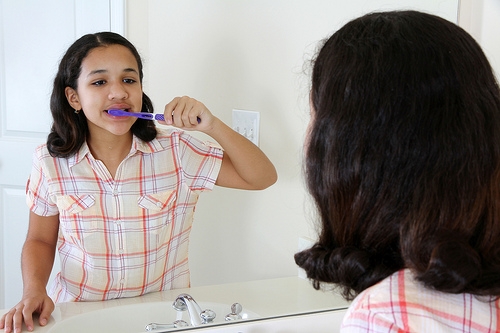
























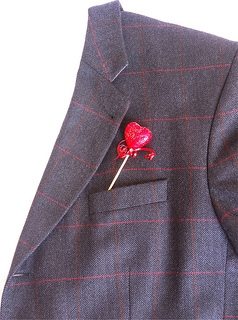




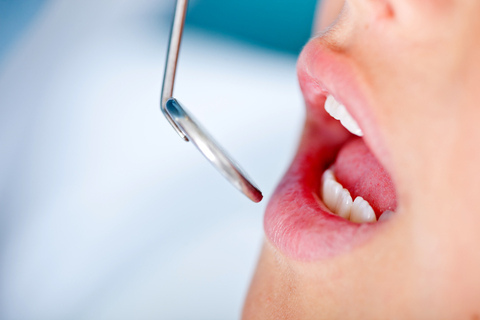


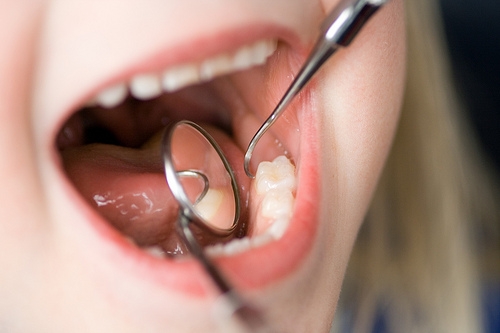



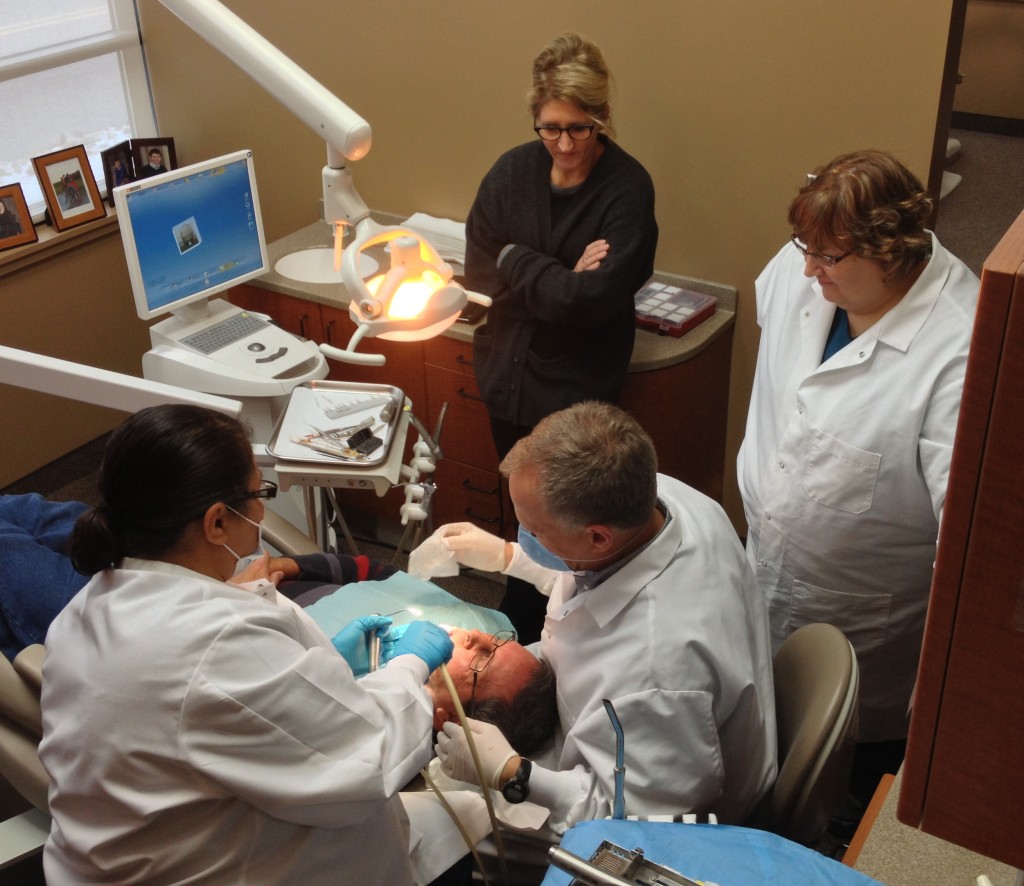



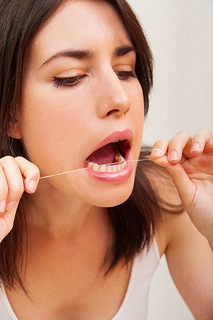


 Dental X-rays are an essential and invaluable tool to help assist us in evaluating your oral health. With X-rays, we can see what’s happening beneath the surface of your teeth and gums and identify oral health issues otherwise hidden during a visual exam, including:
Dental X-rays are an essential and invaluable tool to help assist us in evaluating your oral health. With X-rays, we can see what’s happening beneath the surface of your teeth and gums and identify oral health issues otherwise hidden during a visual exam, including:






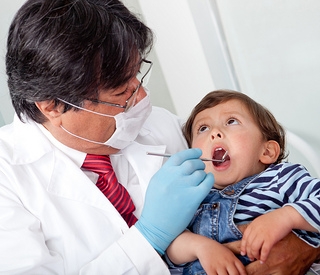






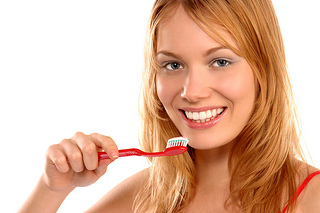









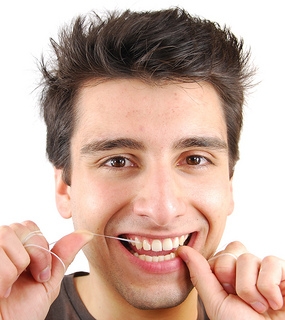













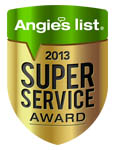
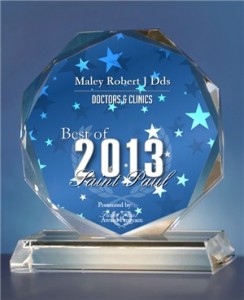
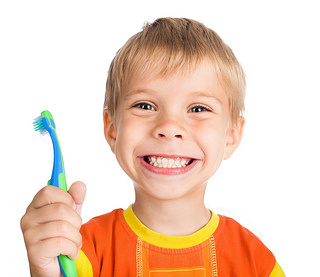








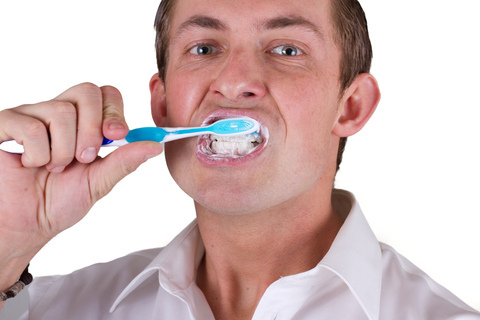
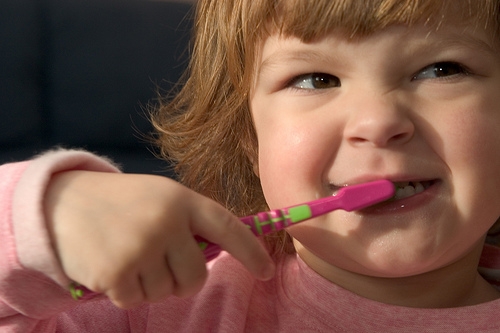





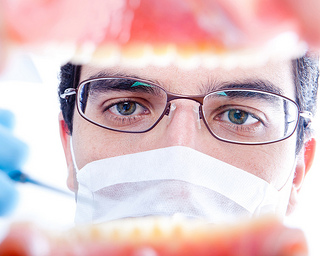

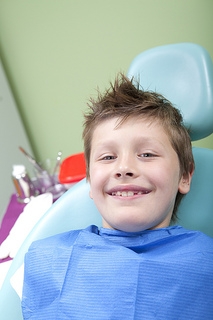


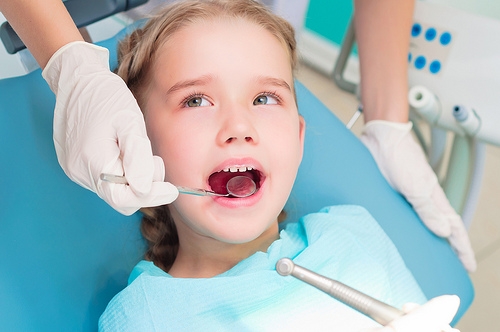


 Get to know more about our fantastic staff on our blog! Today we are introducing Lynda, our Registered Dental Assistant.
Get to know more about our fantastic staff on our blog! Today we are introducing Lynda, our Registered Dental Assistant.

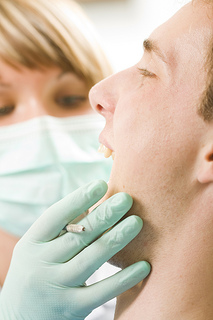


















 What is Oral Cancer?
What is Oral Cancer?

 It’s almost spring! Tulips are blooming and the world is awakening from its winter sleep. We thought today we would remind our patients about the need to visit our office for your cleaning. After all, studies have shown there could a link between proper oral and dental care and heart disease, diabetes and even stroke. Regular visits to our office can keep harmful bacteria from entering your body by removing plaque build up.
It’s almost spring! Tulips are blooming and the world is awakening from its winter sleep. We thought today we would remind our patients about the need to visit our office for your cleaning. After all, studies have shown there could a link between proper oral and dental care and heart disease, diabetes and even stroke. Regular visits to our office can keep harmful bacteria from entering your body by removing plaque build up.












 The year is almost over, and as we reflect on the year that was, we’d like to ask all our patients: what was memorable about 2012 for you, and what are you looking forward to in 2013? Do you have a New Year’s resolution, or any exciting plans for the coming year?
The year is almost over, and as we reflect on the year that was, we’d like to ask all our patients: what was memorable about 2012 for you, and what are you looking forward to in 2013? Do you have a New Year’s resolution, or any exciting plans for the coming year?
 We know dental emergencies are never convenient nor timely. If you are a patient of record, we are committed to your dental health and are happy to see you.
We know dental emergencies are never convenient nor timely. If you are a patient of record, we are committed to your dental health and are happy to see you.


 Besides brushing and flossing, a swish with mouthwash can keep your smile fresh and bright. But which kind you use depends on your needs, according to Dr. Maley.
Besides brushing and flossing, a swish with mouthwash can keep your smile fresh and bright. But which kind you use depends on your needs, according to Dr. Maley. At Dr. Bob Maley Family Dentistry, we encourage our patients to practice good oral hygiene between office visits. Part of that process includes flossing, which is the process of cleaning between the teeth to remove food and debris from the areas that are hard to reach with a toothbrush. When food is allowed to remain between the teeth, it provides a breeding ground for bacteria, which can cause periodontal disease.
At Dr. Bob Maley Family Dentistry, we encourage our patients to practice good oral hygiene between office visits. Part of that process includes flossing, which is the process of cleaning between the teeth to remove food and debris from the areas that are hard to reach with a toothbrush. When food is allowed to remain between the teeth, it provides a breeding ground for bacteria, which can cause periodontal disease. Many people who are careful about brushing and flossing their teeth wonder how they still end up with cavities or tooth decay. Several factors affect wear and tear on tooth enamel. Diet is a major factor, with certain foods increasing the likelihood that your enamel will become discolored or decayed. Pay close attention to the foods you eat to keep your pearly whites looking healthy and clean.
Many people who are careful about brushing and flossing their teeth wonder how they still end up with cavities or tooth decay. Several factors affect wear and tear on tooth enamel. Diet is a major factor, with certain foods increasing the likelihood that your enamel will become discolored or decayed. Pay close attention to the foods you eat to keep your pearly whites looking healthy and clean. Concerned parents often ask us about which kinds of snacks are best for a child's teeth. While most know that candy isn't the best choice, many parents are confused about which kinds of after-school snacks can actually be beneficial for teeth
Concerned parents often ask us about which kinds of snacks are best for a child's teeth. While most know that candy isn't the best choice, many parents are confused about which kinds of after-school snacks can actually be beneficial for teeth Simply put, yes! Visiting the dentist on a regular basis is essential to keeping your smile in tip-top shape. Dr. Bob Maley offers a number of preventive services to ensure the health of your mouth and the beauty of your teeth. We’d like to think that your smile is just as important to us as it is to you!
Simply put, yes! Visiting the dentist on a regular basis is essential to keeping your smile in tip-top shape. Dr. Bob Maley offers a number of preventive services to ensure the health of your mouth and the beauty of your teeth. We’d like to think that your smile is just as important to us as it is to you! Cavities occur as a result of the destruction of tooth structure, called tooth decay. Tooth decay can affect both the enamel (the outer coating of the tooth) and the dentin (the inner layer of the tooth). While it is very important to brush and floss every day to remove food particles and plaque, regular cleanings and checkups are the best way to help avoid cavities.
Cavities occur as a result of the destruction of tooth structure, called tooth decay. Tooth decay can affect both the enamel (the outer coating of the tooth) and the dentin (the inner layer of the tooth). While it is very important to brush and floss every day to remove food particles and plaque, regular cleanings and checkups are the best way to help avoid cavities. Since 1964. when cities began adjusting the fluoride levels in water, fluoridation has dramatically improved the oral health of tens of millions of Americans. Community water fluoridation is the single most effective public health measure to prevent tooth decay, but you may not be drinking as much fluoridated water as you may think. If bottled or home-purified water is your main source for drinking water, you may be missing out on this extremely safe and effective mineral that prevents tooth decay.
Since 1964. when cities began adjusting the fluoride levels in water, fluoridation has dramatically improved the oral health of tens of millions of Americans. Community water fluoridation is the single most effective public health measure to prevent tooth decay, but you may not be drinking as much fluoridated water as you may think. If bottled or home-purified water is your main source for drinking water, you may be missing out on this extremely safe and effective mineral that prevents tooth decay. You water the garden three times a week, you change your car's oil every three months, and you replace the batteries in your smoke detectors once a year. Your teeth need to see your dentist on a regular schedule, too.
You water the garden three times a week, you change your car's oil every three months, and you replace the batteries in your smoke detectors once a year. Your teeth need to see your dentist on a regular schedule, too. Now that many of the schools are back in session, we would like to remind all of our patients about the importance of scheduling appointments in advance. With school, clubs, sports and family duties to consider, we know that it can be challenging to find time this fall.
Now that many of the schools are back in session, we would like to remind all of our patients about the importance of scheduling appointments in advance. With school, clubs, sports and family duties to consider, we know that it can be challenging to find time this fall. We all experience bad breath every now and then. Usually it’s a minor inconvenience resolved with a thorough brushing. There are times, however, when bad breath becomes a re-occurring condition that can be a major source of embarrassment. Fortunately, mouth odor is preventable. By familiarizing yourself with the causes of bad breath, you’ll be able to take action and keep it in check.
We all experience bad breath every now and then. Usually it’s a minor inconvenience resolved with a thorough brushing. There are times, however, when bad breath becomes a re-occurring condition that can be a major source of embarrassment. Fortunately, mouth odor is preventable. By familiarizing yourself with the causes of bad breath, you’ll be able to take action and keep it in check. If you have ever suffered from a toothache, you know how excruciating the pain can be. Tooth pain is usually caused by irritation to the nerves in the roots of the teeth, although there are other potential sources of the pain as well. Fortunately, there are ways to both prevent and resolve a toothache, regardless of its cause.
If you have ever suffered from a toothache, you know how excruciating the pain can be. Tooth pain is usually caused by irritation to the nerves in the roots of the teeth, although there are other potential sources of the pain as well. Fortunately, there are ways to both prevent and resolve a toothache, regardless of its cause.

 Gingivitis is a type of periodontal disease in which only your gums are affected. Gingivitis, according to the American Dental Association (ADA), is a milder and often reversible type of periodontal disease. However, it can lead to periodontitis -- a more destructive and serious disease -- if proper professional treatment and home care aren't put into place. No tissue damage or irreversible bone damage is present in the gingivitis stage of periodontal disease.
Gingivitis is a type of periodontal disease in which only your gums are affected. Gingivitis, according to the American Dental Association (ADA), is a milder and often reversible type of periodontal disease. However, it can lead to periodontitis -- a more destructive and serious disease -- if proper professional treatment and home care aren't put into place. No tissue damage or irreversible bone damage is present in the gingivitis stage of periodontal disease. Brushing your teeth every day keeps them cleaner, improves your breath, and reduces plaque buildup. But did you know that there may be a connection between your dental health and chronic illness? Some scientific evidence suggests that poor dental health may be linked to cardiovascular disease. Although more research is needed to explore this association, it provides yet another reason to brush your teeth twice per day, floss daily, and visit your dentist regularly.
Brushing your teeth every day keeps them cleaner, improves your breath, and reduces plaque buildup. But did you know that there may be a connection between your dental health and chronic illness? Some scientific evidence suggests that poor dental health may be linked to cardiovascular disease. Although more research is needed to explore this association, it provides yet another reason to brush your teeth twice per day, floss daily, and visit your dentist regularly.




 If you have missing teeth, it is crucial to replace them. Without all your teeth, chewing and eating can destabilize your bite and cause you discomfort. Dental implants are a great option for replacing missing or badly diseased teeth. A dental implant offers comfort, support, stability, and is as close to a natural tooth that a restoration can be.
If you have missing teeth, it is crucial to replace them. Without all your teeth, chewing and eating can destabilize your bite and cause you discomfort. Dental implants are a great option for replacing missing or badly diseased teeth. A dental implant offers comfort, support, stability, and is as close to a natural tooth that a restoration can be. Cavities occur as a result of the destruction of tooth structure, called tooth decay. Tooth decay can affect both the enamel (the outer coating of the tooth) and the dentin (the inner layer of the tooth). While it is very important to brush and floss every day to remove food particles and plaque, regular cleanings and checkups with Dr. Bob Maley are also important to help avoid cavities.
Cavities occur as a result of the destruction of tooth structure, called tooth decay. Tooth decay can affect both the enamel (the outer coating of the tooth) and the dentin (the inner layer of the tooth). While it is very important to brush and floss every day to remove food particles and plaque, regular cleanings and checkups with Dr. Bob Maley are also important to help avoid cavities. Your child should visit
Your child should visit  Nothing is sweeter than your new baby’s gummy little smile. With the arrival of your little one, it’s important to prepare for the arrival of that first tooth. Even before your child’s first tooth appears, his or her gums can benefit from your careful attention. After breast- or bottle-feeding, wrap your finger with a damp washcloth and gently rub across your baby’s gums. This will also reinforce the habit of brushing after eating as your baby grows up.
Nothing is sweeter than your new baby’s gummy little smile. With the arrival of your little one, it’s important to prepare for the arrival of that first tooth. Even before your child’s first tooth appears, his or her gums can benefit from your careful attention. After breast- or bottle-feeding, wrap your finger with a damp washcloth and gently rub across your baby’s gums. This will also reinforce the habit of brushing after eating as your baby grows up. As if parenting isn’t hard enough, you need to make sure your child is brushing and flossing routinely and correctly to keep their teeth healthy over the long haul. We recognize this is no easy task, so we often recommend sealants--an added protection that can decrease a child’s chance of tooth decay by 60%! Better still, it’s a simple, painless procedure.
As if parenting isn’t hard enough, you need to make sure your child is brushing and flossing routinely and correctly to keep their teeth healthy over the long haul. We recognize this is no easy task, so we often recommend sealants--an added protection that can decrease a child’s chance of tooth decay by 60%! Better still, it’s a simple, painless procedure. Email? Text? Phone call? You can choose how you’d like to receive appointment reminders and other communications from our office. Patients have told us they love these features, and beginning this month we’ve added even more.
Email? Text? Phone call? You can choose how you’d like to receive appointment reminders and other communications from our office. Patients have told us they love these features, and beginning this month we’ve added even more. You water the garden three times a week, you change your car's oil every three months, and you replace the batteries in your smoke detectors once a year. Your teeth need to see your dentist on a regular schedule, too.
You water the garden three times a week, you change your car's oil every three months, and you replace the batteries in your smoke detectors once a year. Your teeth need to see your dentist on a regular schedule, too. Cities have been adjusting the fluoride levels in water since 1964. Since that time, fluoridation has dramatically improved the oral health of tens of millions of Americans. Community water fluoridation is the single most effective public health measure to prevent tooth decay, but you may not be drinking as much fluoridated water as you may think. If bottled or home-purified water is your main source for drinking water, you may be missing out on this extremely safe and effective mineral that prevents tooth decay.
Cities have been adjusting the fluoride levels in water since 1964. Since that time, fluoridation has dramatically improved the oral health of tens of millions of Americans. Community water fluoridation is the single most effective public health measure to prevent tooth decay, but you may not be drinking as much fluoridated water as you may think. If bottled or home-purified water is your main source for drinking water, you may be missing out on this extremely safe and effective mineral that prevents tooth decay. Dental X-rays are an essential and invaluable tool to help assist Dr. Bob Maley in evaluating your oral health. With X-rays, we can see what’s happening beneath the surface of your teeth and gums and identify oral health issues otherwise hidden during a visual exam, including:
Dental X-rays are an essential and invaluable tool to help assist Dr. Bob Maley in evaluating your oral health. With X-rays, we can see what’s happening beneath the surface of your teeth and gums and identify oral health issues otherwise hidden during a visual exam, including: You know what they say, “if someone offers you a mint, take it!”
You know what they say, “if someone offers you a mint, take it!” Fluoride is a compound that contains fluorine, a natural element. Using small amounts of fluoride on a regular basis can help prevent tooth decay. Fluoride inhibits loss of minerals from tooth enamel and encourages remineralization (strengthening areas that are weakened and beginning to develop cavities).
Fluoride is a compound that contains fluorine, a natural element. Using small amounts of fluoride on a regular basis can help prevent tooth decay. Fluoride inhibits loss of minerals from tooth enamel and encourages remineralization (strengthening areas that are weakened and beginning to develop cavities).
 Visiting
Visiting  We always say St. Paul is a small town in a big city. Knowing your neighbors and having lots of great independent places to eat, drink and shop--many you can walk to--are some of the best parts of being in the Highland Park/West 7th neighborhood. If you're new in town, we've got some recommendations that will make you love St. Paul from the start. Here are some of our team's favorite hotspots:
We always say St. Paul is a small town in a big city. Knowing your neighbors and having lots of great independent places to eat, drink and shop--many you can walk to--are some of the best parts of being in the Highland Park/West 7th neighborhood. If you're new in town, we've got some recommendations that will make you love St. Paul from the start. Here are some of our team's favorite hotspots: Getting your taxes filed, your windows washed for summer sun, your car in for routine maintenance...these types of jobs can be a pain, but once you get them done, it feels soooo good! The same goes for getting your teeth cleaned.
Getting your taxes filed, your windows washed for summer sun, your car in for routine maintenance...these types of jobs can be a pain, but once you get them done, it feels soooo good! The same goes for getting your teeth cleaned.

 Whether you’ve been a patient of ours for years or just started visiting our practice and have a follow-up question for Dr. Bob Maley or our team, or if you’d simply like to drop us a quick line, we’d love to hear from you! Our online communications are just another way to share important information about your dental health and happenings at our practice.
Whether you’ve been a patient of ours for years or just started visiting our practice and have a follow-up question for Dr. Bob Maley or our team, or if you’d simply like to drop us a quick line, we’d love to hear from you! Our online communications are just another way to share important information about your dental health and happenings at our practice.
 Grind, grind, grind. If you live with a teeth grinder, you may be familiar with this unpleasant sound. Did you know teeth grinding, or bruxism, is common in children as well? In fact, three out of 10 kids grind or clench their teeth, usually in response to losing teeth, jaw growth or other discomforts, such as allergies or infections. Teeth grinding is typically a passing phenomena as most kids outgrow it by the time they reach their teenage years. An important thing to remember is that kids frequently grind their teeth in response to stress, and taking measures to reduce or eliminate stress can help solve the problem.
Grind, grind, grind. If you live with a teeth grinder, you may be familiar with this unpleasant sound. Did you know teeth grinding, or bruxism, is common in children as well? In fact, three out of 10 kids grind or clench their teeth, usually in response to losing teeth, jaw growth or other discomforts, such as allergies or infections. Teeth grinding is typically a passing phenomena as most kids outgrow it by the time they reach their teenage years. An important thing to remember is that kids frequently grind their teeth in response to stress, and taking measures to reduce or eliminate stress can help solve the problem. Thanks for the question! Yes!
Thanks for the question! Yes! Hearing words like sticky, bacteria, acid, and decay makes most people cringe. Thinking about those things on your teeth…ew! Unfortunately, these are all characteristics of plaque and tartar: the enemies of healthy teeth.
Hearing words like sticky, bacteria, acid, and decay makes most people cringe. Thinking about those things on your teeth…ew! Unfortunately, these are all characteristics of plaque and tartar: the enemies of healthy teeth. When your child needs urgent dental treatment,
When your child needs urgent dental treatment,  Dr. Bob Maley
Dr. Bob Maley  Even if you brush and floss daily, it is still important to see
Even if you brush and floss daily, it is still important to see  With winter sports under way for a lot of our patients,
With winter sports under way for a lot of our patients, 
